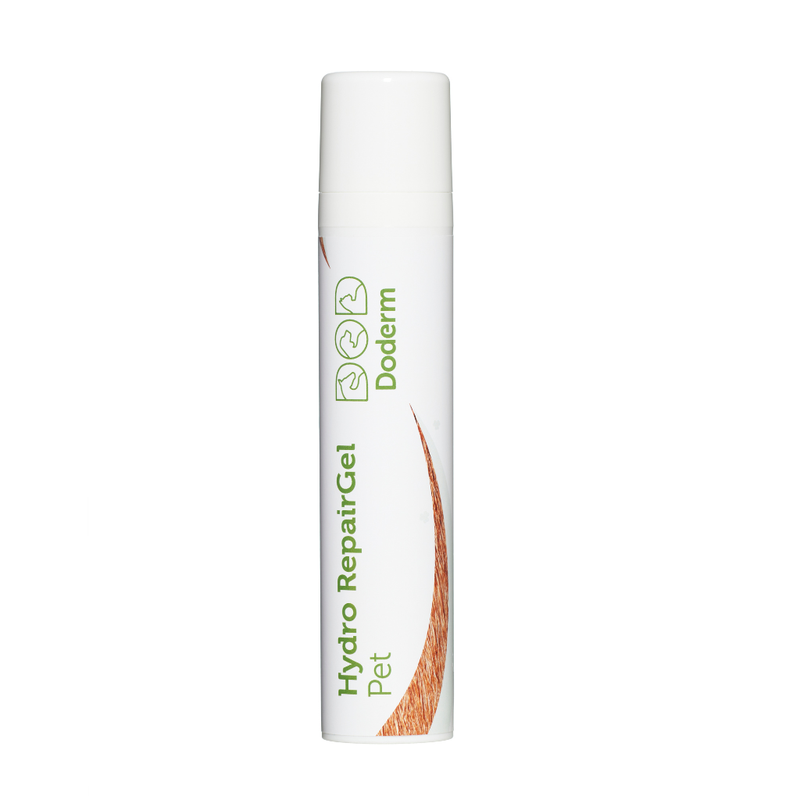If you enjoy walking your dog, he may get a tick bite. This can happen to any dog at least once. If you can spot a tick bite on your dog early, the risk of any diseases that ticks can transmit is reduced. Therefore, it is important to check your dog regularly for ticks. In this blog, we will take a closer look at what ticks are, how your dog gets them, how to remove a tick, what symptoms occur after a tick bite, how to care for the skin after a tick bite and how to prevent a tick bite.
What is a check mark?
Ticks belong to the arachnid family and are small, blood-sucking parasites. They attach themselves to your dog's skin and feed on blood. Ticks have different life stages, including larvae, nymphs and adult ticks. It is primarily nymphs and adult ticks that pose a risk for transmitting disease to dogs.
How does a dog get a tick?
Ticks live mainly in vegetation such as tall grass, shrubs and trees. When you walk your dog, there is a good chance that you will come across this type of vegetation and a tick can attach itself to their fur. So they don't fall from trees and can't jump as is often believed. They then move to places where there is the least hair so that they can bite more easily. Places where ticks are common are the head and neck, croup, legs, armpits and ears. Check your dog for ticks after every walk so that if they bite, they can be removed in time!
Removing ticks from dogs
If you find a tick on your dog, it is important to remove it as quickly and correctly as possible:
- Use special tick tweezers to grasp the tick as close to the skin as possible.
- Pull gently and apply even upward pressure to slowly and straighten the tick out of the skin.
- Do not compress the tick as this increases the risk of transmission of pathogens.
- To care for the skin after a tick bite, disinfect or use Doderm Hydro RepairGel.
Symptoms of a tick bite in dogs
Not all dogs show symptoms immediately after a tick bite, but some may have mild to severe reactions.
Some common symptoms include:
Irritation and Scratching : Your dog may experience itching from a tick bite and may scratch, lick or bite excessively at the bite site.
Redness and swelling : The skin around the tick bite may become red and swollen.
Tiredness (lethargy): A dog may appear lethargic or weak after a tick bite.
Fever: Some dogs may have an elevated body temperature.
Changes in appetite: Decreased appetite may also occur.
Skin irritation after a tick bite
After a tick bite, the dog's skin may be irritated, mainly due to a reaction to the tick's saliva. As mentioned above, redness, itching and swelling may occur around the tick bite. Small wounds may also appear from scratching. It is important to keep a close eye on these changes as they may indicate a possible reaction to the tick bite or even tick-borne diseases. In addition, it is important to support the skin with nourishing products so that the skin can recover. Doderm Hydro RepairGel can support the skin with these irritations.
Tick-borne diseases
Ticks can transmit various diseases to dogs. Some of the most common diseases are:
- Lyme disease : Caused by the bacterium Borrelia burgdorferi, it can lead to symptoms such as joint pain, lameness and fatigue.
- Ehrlichiosis : A bacterial infection that takes hold in the dog's white blood cells can cause symptoms such as fever, nosebleeds, fatigue and loss of appetite. li>
- Anaplasmosis : Caused by the bacteria Anaplasma Phagocytophilum, it results in a lack of platelets. These platelets are what normally allow blood to clot. As you can imagine, if your dog has a wound, it will be more difficult to stop the bleeding. Symptoms include: fever, vomiting, fatigue and pale mucous membranes.
- Babesiosis: A parasitic infection that attacks red blood cells and can cause symptoms such as fever, anemia, and lethargy.
Preventing Ticks in Dogs
Fortunately, there are several steps you can take to reduce the risk of tick bites in dogs
Keep grass short :
Regularly mowing the grass in your yard can reduce the tick population.
Select suitable hiking areas:
Avoid densely populated areas when hiking.
Tick-resistant products :
Use tick-resistant shampoos, sprays, collars or pipettes that are specifically designed to repel ticks in dogs.
Remedies against ticks: chemical and natural
There are several means available to control ticks:
Chemical active ingredients:
Tick repellent products often contain chemical repellents such as fipronil, permethrin and fluralaner. These products are often effective, but it is important to follow the manufacturer's instructions and consult a veterinarian. Spot-on is an example of a chemical pesticide against ticks in dogs and is effective for several weeks. The downside is that the drops are very toxic. They are insecticides and can irritate mucous membranes, skin and eyes on contact. The advice is: has your pet just been treated? Then stay away from the area where you applied for 24 hours.
Natural resources:
Some natural products containing essential oils (such as lavender, rose geranium, cedarwood, eucalyptus, lemongrass), neem oil, lauric acid, and apple cider vinegar are said to repel ticks. Although these remedies appear to be less toxic, their effectiveness is not always scientifically proven. Always consult a veterinarian before using natural remedies, and continue to check your dog after each walk.
Conclusion
Tick bites in dogs pose a real health risk, but with the right preventative measures and care we can minimize the effects of these annoying parasites. After reading this blog, do you still have questions about tick bites in dogs or how Doderm Hydro Repairgel can support your dog's skin after a tick bite? Then get in touch Contact us, we'll be happy to help you!



0 comments